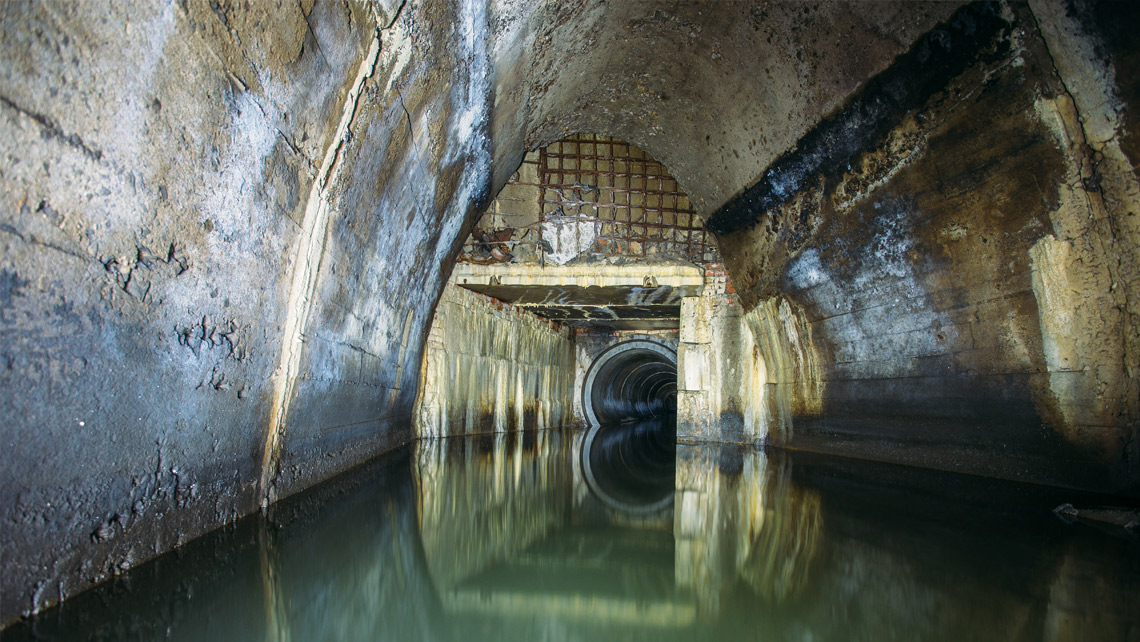Wastewater or energy source – it depends on your point of view
Each of us plays a role in producing urban sewage, day in and day out. It’s usually a mix of used water from your kitchen or bathroom, toilet water, and even the rainwater that runs off your property. It all flows through an underground sewer system to your local municipal sewage treatment plant. For most of us, the problem is resolved once we have flushed it away – our unwanted waste is gone.
But one person’s trash is another’s treasure. And so it is with wastewater. Admittedly, when you think of stinky wastewater you don’t usually think of a coveted raw material, but it’s worth taking a closer look. The organic residues inside are a rich source of energy.
Bacteria do the job, but not for free
Most modern wastewater treatment is what’s called an “activated sludge process” in which bacteria help clean the wastewater. This process mimics the natural purification process of water bodies, just in a more compact and technically designed way.
Human waste is welcome food for various bacteria that naturally occur in wastewater. They feed on the pollutants, which typically consist of organic substances and special nutrients like nitrogen and phosphorus. Those substances and nutrients are absorbed by the bacteria and converted into harmless residues. There are three things left in the end: new bacterial mass, gaseous nitrogen, and carbon dioxide.
To make this whole process work, all the little bugs need is time and air to breathe. But it’s exactly this aeration that makes the activated sludge process so energy intensive. Typically, more than half of the total energy that a sewage treatment plant consumes is used for aeration of the bacteria.
To boost overall efficiency, sewage plants try to capture some energy at the end of the treatment process. In many cases, the excess bacterial mass is processed in airtight fermenters in order to produce biogas (methane) as a source of energy. Still, the carbon dioxide that was previously blown into the air by the bacteria is irretrievably lost for biogas production and electricity generation. What at first appears to be successful is actually not optimal in terms of resource use.
Bio doesn’t automatically mean sustainable
Wastewater treatment with bacteria is common around the world. Because it’s a “biological” method, people generally accept that it’s sustainable. But to properly evaluate the sustainability of a process, you can’t ignore the energy consumption.
That is why researchers from the Swedish Environmental Research Institute (IVL) undertook a detailed life cycle assessment (LCA) comparing different wastewater treatment processes. By the help of digital twins, the model analysis evaluated the energy used in each, and the potential impact on climate change. Their study included purely biological processes as well as biological processes aided by pre-precipitation, a targeted chemical treatment. The researchers came to an interesting conclusion: purely biological wastewater treatment has significantly higher potential for global warming.
Wastewater treatment with pre-precipitation is more sustainable when accounting for energy consumption and production.
Magnus Rahmberg, Group Manager IVL explains, “In our recent LCA-study on the evaluation of various wastewater treatment technologies, we were able to determine that chemical pre-precipitation with iron or aluminum-containing water chemicals consumes less energy overall for the entire cleaning process. In addition, this method can generate up to 35% more biogas.”
“Taken together, these two effects ensure that wastewater treatment with chemical pre-precipitation is more energy efficient and has less potential for global warming than, for example, purely biological wastewater treatment”, he adds.
How it works: an “energy recovery stage”
In chemical pre-precipitation, phosphorus and the finest organic particles are captured by means of special wastewater treatment chemistry containing iron or aluminum. The chemical reaction separates part of the energy-rich food (before it’s all eaten up by the bacteria) and sends it directly to a fermenter. This is called the energy recovery stage and it makes the process more energy efficient in two ways. First, it creates more biogas so more electricity can be produced. Second, it reduces the energy needed for aeration throughout the treatment process.
In other words, chemical pre-precipitation offers a decisive energy advantage. It’s a gamechanger when it comes to wastewater and energy efficiency. What was once solely sewage and waste that had to be cleaned-up is now part of a more sustainable process that keeps our water, nutrients and energy flowing. Clearly, the introduction of an energy recovery stage to modern sewage treatment plants is a benefit for people and the planet.
Carbon footprint of different wastewater treatment plant configurations – watch our webinar!
Watch our webinar to hear the findings of a study conducted by IVL Swedish Environmental Research Institute. The study investigated three different wastewater treatment plant configurations – pre-precipitation, simultaneous precipitation, and biological phosphorus removal – to understand the differences in environmental efficiency in terms of carbon footprint, energy balance, and impact of stricter effluent limits.

